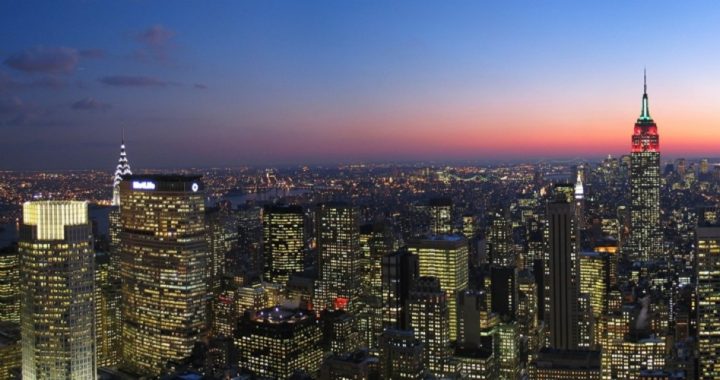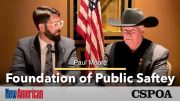
In its latest Big Brother endeavor, New York City has begun a program to round up the city’s mentally ill and ensure they are taking their court-ordered medications. The New York Post reports that police will be armed with a list of the most-wanted mentally ill and a tracking system, and will force those deemed ill to go to a hospital.
The new policy comes as a result of two recent subway deaths in which the victims were pushed onto the train tracks by mentally ill suspects.
“After the Queens subway attack, the [city] decided to take a proactive approach to track down the most dangerous mental-health patients that currently have mental-hygiene warrants” out for them, one law enforcement official said in the Post report.
The first incident involved a homeless man named Naeem Davis, who cited different motives for his pushing a complete stranger onto the tracks, including voices in his head and being angry at the loss of his favorite boots.
The second case involved assailant Erika Menendez, who targeted an Iranian man based on her misguided political convictions. She told the police that she targeted Sunando Sen and pushed him in front of an oncoming 7 train in Queens because she “hated Hindus and Muslims since 2001 since they put down the Twin Towers.” She added, “I have been beating them up since.”
There are currently 25 names on the most-wanted list of mentally ill. The process involves the issuance of a specific type of warrant that permits the police to arrest individuals, even if they have not committed a crime, simply for not attending court-ordered therapy.
The Washington Times reports:
The arrest warrants the police are pursuing do not mean the targets are wanted for crimes, but rather for avoiding court-ordered mental-health treatment, according to the Post. Police in the city’s Real Time Crime Center are tasked with the roundup using advanced technology. Once tracked down, the suspects then will be forcibly taken by detectives to hospitals for treatment.
A handful of police officers are currently assigned to the new policy, which began a few weeks ago. The program is a variation of an older policy. The New York Post explains:
In the past, the city Department of Health would ask cops for help finding mentally ill people who aren’t taking their court-mandated meds so they could be taken to clinics. But that only applied to those who had known addresses — and patients who went off the grid were rarely pursued, the sources said.
The city is now concerned it could be liable if one of those people goes off the rails and hurts someone — or themselves, the sources said.
The Health Department fears that these mentally ill patients could be dangerous. Now, “you have a family member who goes to the Department of Health and gives them the information. Then they go to the Police Department, and together, the DOH person and the police go out and try to track down these people,” said a city official. “They’re just trying to get these people help.”
“All of these patients are receiving treatment for mental-health conditions,” said Department of Health spokesman Sam Miller. “If they do not receive sustained treatment … they could pose some risk to themselves, family members or others.”
The policy has attracted criticism from civil libertarians who view it as unconstitutional government overreach.
According to Judge Andrew Napolitano, the policy is “clearly unconstitutional because the Constitution says the only way you can arrest someone is if you see them committing a crime or a probable cause to believe they have committed, not are going to commit, but have committed a crime.”
Regarding the mentally ill, Napolitano contends that only very specific exceptions can be made to those criteria. “Only those who are mentally ill and are in imminent danger of harm to themselves and others can be in the category of candidates for arrest. Anything short of that, the person cannot be arrested without an order from a judge,” he explained.
“That’s why we have a Second Amendment. So we can protect ourselves,” said Napolitano.
Napolitano sums up the constitutional dilemma created by the policy.
“We do not have a system of government that lets the government predict who’s going to do the wrong thing and arrest them before they do it,” Napolitano concludes. “The police should be there to keep us safe, the MTA should operate subways and subway platforms that are safe, but you can’t arrest groups of people because of what some 1 or 2 amongst their number are likely to do. That’s what they did in Eastern Europe and we overthrew those governments.”
Additionally, some critics are concerned by the forced issuance of psychotropic drugs and assert that they do not necessarily correct mental illness but exacerbate it.
Throughout the last decade, a number of notorious school shooters have been found to be either on or withdrawing from antidepressants, known as selective serotonin reuptake inhibitors (SSRI), including Columbine shooter Eric Harris, who was taking the powerful Luvox; Jeffrey Weise, who killed 10 students at Red Lake High School while on Prozac; and Kip Kinkel, who, during Prozac withdrawal, killed his parents and then went on a shooting spree at his high school.
“In virtually every mass school shooting during the past 15 years, the shooter has been on or in withdrawal from psychiatric drugs,” writes Lawrence Hunter of the Social Security Institute. “Yet, federal and state governments continue to ignore the connection between psychiatric drugs and murderous violence, preferring instead to exploit these tragedies in an oppressive and unconstitutional power grab to snatch guns away from innocent, law-abiding people.”
The connection between psychiatric drugs and violence is not limited to school shootings, but has also been seen in the high-profile cases of John Hinckley, Jr., who attempted to assassinate President Ronald Reagan, and Ted Kaczynski, the “Unabomber,” who killed three and injured 23.
Meanwhile, those enforcing New York’s new policy are concerned about the logistics of the scheme, most notably that it will be difficult to track down the homeless on the most-wanted list. “There’s no rhyme or reason to their craziness,” a law enforcement source told the Post.
Photo of New York City at dusk




